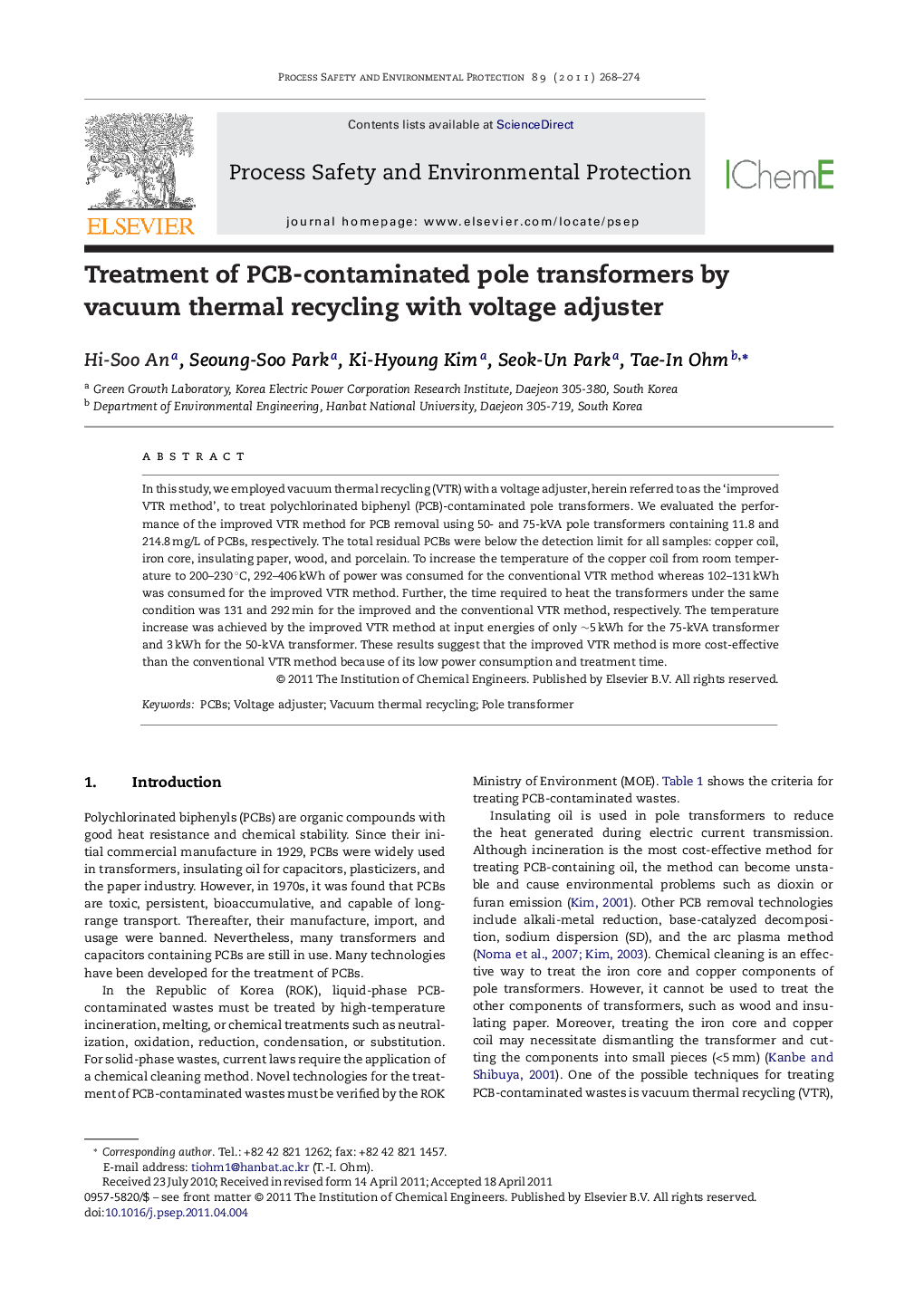| کد مقاله | کد نشریه | سال انتشار | مقاله انگلیسی | نسخه تمام متن |
|---|---|---|---|---|
| 588559 | 878581 | 2011 | 7 صفحه PDF | دانلود رایگان |

In this study, we employed vacuum thermal recycling (VTR) with a voltage adjuster, herein referred to as the ‘improved VTR method’, to treat polychlorinated biphenyl (PCB)-contaminated pole transformers. We evaluated the performance of the improved VTR method for PCB removal using 50- and 75-kVA pole transformers containing 11.8 and 214.8 mg/L of PCBs, respectively. The total residual PCBs were below the detection limit for all samples: copper coil, iron core, insulating paper, wood, and porcelain. To increase the temperature of the copper coil from room temperature to 200–230 °C, 292–406 kWh of power was consumed for the conventional VTR method whereas 102–131 kWh was consumed for the improved VTR method. Further, the time required to heat the transformers under the same condition was 131 and 292 min for the improved and the conventional VTR method, respectively. The temperature increase was achieved by the improved VTR method at input energies of only ∼5 kWh for the 75-kVA transformer and 3 kWh for the 50-kVA transformer. These results suggest that the improved VTR method is more cost-effective than the conventional VTR method because of its low power consumption and treatment time.
► We investigated the efficiency of the improved VTR method for treating pole transformers.
► Conventional VTR required a power of 292–406 kWh, but improved VTR 102–131 kWh.
► The voltage adjuster adapted for improved VTR with input of 5 kWh for 75 kVA transformer.
► The improved VTR was more cost effective than conventional VTR for treating transformers.
Journal: Process Safety and Environmental Protection - Volume 89, Issue 4, July 2011, Pages 268–274